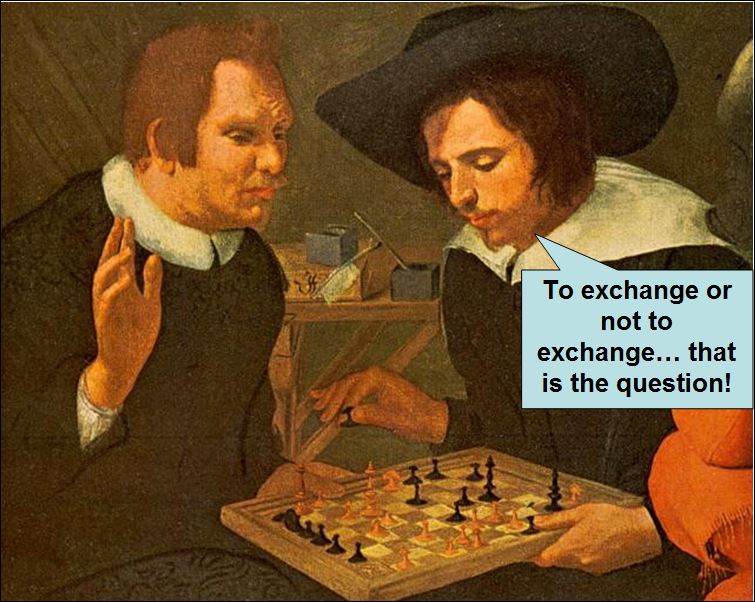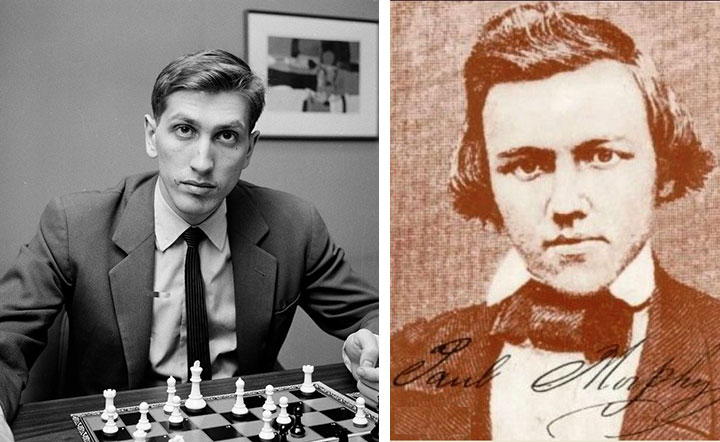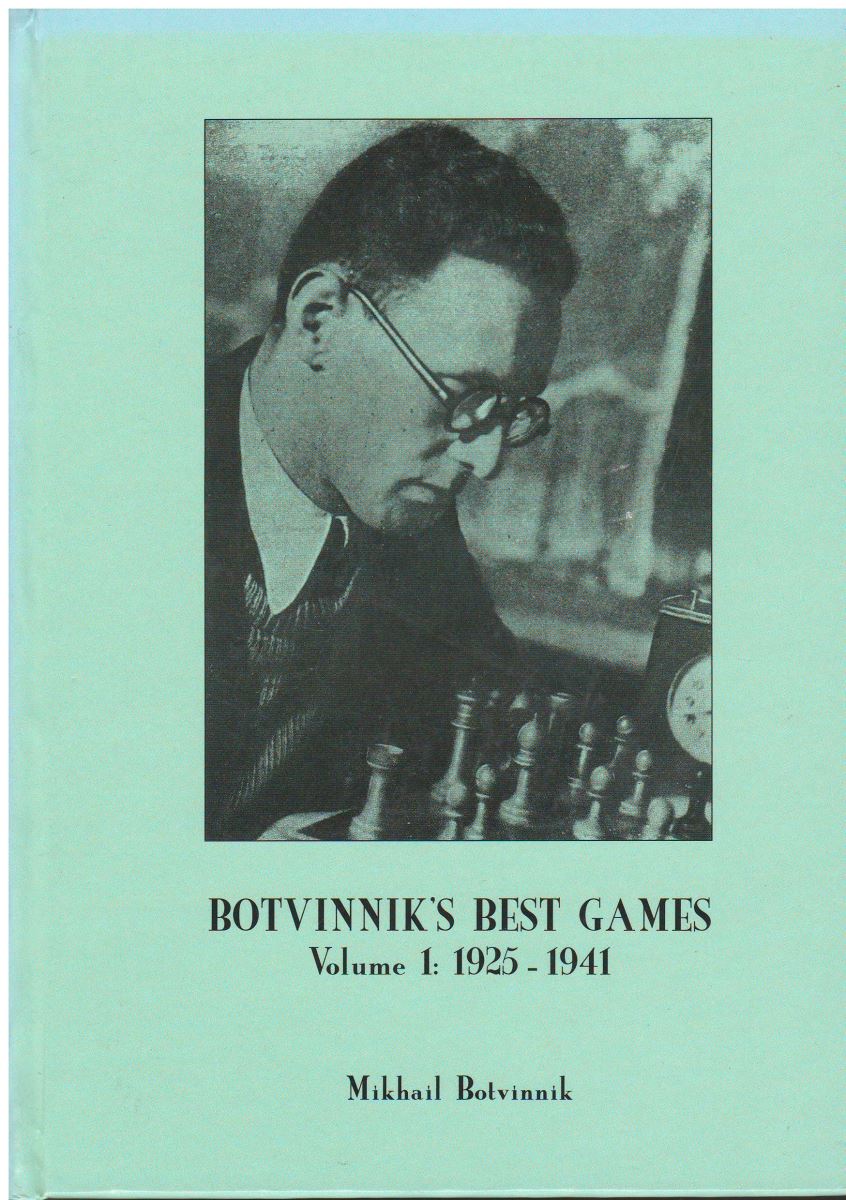



Many months ago, while preparing a book review, I was introduced to one of the most amazing ideas of all times: the "exchange of pieces". Now you are thinking: "What? Is he out of his mind? We exchange pieces all the time... how is that important?"
Well, I was watching one of Fischer's games, and of course when watching a game from the best player of all time, one can only be inspired, and brought to another level of chess understanding!
That game totally showed how important the exchanges are. Let me show it, and then explain where you should watch, but keep in mind, while skimming through the game, that the topic is the exchange of pieces, and learning clearly the reasons behind each of them.
Now that you have watched the game, let me explain my amazement at Fischer, because I clearly didn't understand what or why he was doing what he was doing, and it took me a long time.
We are at move 9 of the game, White has just played 9.Be3. Black wants to undermine White's center, can you guess which piece he wants to exchange?
Obviously the Be3, so Fischer plays 9...Ng4 and this was easy to understand. Now, if you are at my poor level you could think Fischer did it, because he wanted to have the bishop pair, and that surely makes sense. At a lower level than mine, some players may think it's important to double the pawns in the enemy territory, but in this position that wasn't the reason, since Black is not going to exploit such advantage.
Let's fast forward a little and reach move 14. White has just played 14.Be2, preparing to castle. Black has the bishop pair advantage, what would you think Black is going to play? And why?
This took me a long time to understand, so Black plays an exchange: 14...Bxf3! What?? "Why did Black gave up the bishop pair," everyone is screaming! Well, we must remember that the enemy king is in the center, and Fischer wants to keep it there, in the best Morphy's style!

To recapitulate: first he exchanged a knight for a bishop, and then exchanged a bishop for a knight, in order to gain total control of ... the square d4!!
Now clearly if we would just evaluate the pieces with the same value, a bishop is 3, a knight is 3, a rook is 5 etc. then we wouldn't understand anything about this game. But those pieces, in Fischer's mind had quite different values, depending on their job, and the squares they were controlling.
As we can see from this small example, the exchange of the pieces can be of utmost importance. Obviously from just watching one game, also if, with such high quality content like this one played by Fischer, I couldn't implement such idea in my own games. This is the reason I'm so happy IM Elisabeth Paehtz came out with this wonderful thematic DVD.

Elisabeth Paehtz | Photo: GFHund CC BY-SA 4.0 via Wikimedia Commons
We could believe that such a DVD is only for the advanced tournament player. But in my opinion this DVD is especially important for beginners, because they can get a taste of what chess is really about. Chess is not only about tactics, though very important, and chess is not about openings, or endgames like being able to give checkmate with knight and bishop. Again, those things are important, but they don't show what is beneath the water of this iceberg we call chess.

Chess is something subtle, like the evaluation of a certain position, and understanding what is the real value of the pieces. Obviously in these new times, where most players online — even those rated 1100 and below — play bullet games, I guess some of these ideas are lost. But for those players of the past, who played mainly with long time controls, they surely needed to delve into the position deeply, and into the meaning of each piece.
Coming to the structure of the DVD, IM Elisabeth Paehtz has made 16 videos, which are divided into 4 main topics:
I found this DVD quite good because IM Paehtz continues to ask questions, and if one stops the video, and thinks upon the position, and what move he should play, then he can get instantaneous feedback. I like to do it on my chessboard like if it was a real game. In this way IM Paehtz became my coach!
The first game, with Botvinnik, made me think it was a draw, and seeing the mastery with which he won was extremely exciting. Notice: many of these games are classics, therefore IM Paehtz is not only teaching us how to think correctly, or how to evaluate the position, but she is also contributing to our knowledge of chess culture!
I'd like to show you the game, ask you some questions, and then, when you will get the DVD, you will discover the answers, and have benefited from such interactive exercise.
Remember in order to learn chess we do need to be involved, so now go back on this game, at the moves I ask you, and try to answer the questions.
When calculating the lines, you cannot move the pieces, like in a real game. So put the position on the chessboard, and give yourself 10 minutes for each question.
IM Paehtz begins to comment the game from black's 14th move. Now what should White play? 15.Ne5 or 15.Be7 and why?
Another question arises at move 17 for white, should he allow the exchange on c4 or not? And why?

In this position White will play 20.Qe3! This move is difficult to find and understand for an amateur who just feels bad about having doubled pawns. Botvinnik comments this game in his book: "Analiticheskie i kriticheskie raboty 1923-1941" published in English as: "Botvinnik's Best Games: Volume 1, 1925 - 1941".
Botvinnik writes, "This move, not evident, is the strongest one! After the exchange of queens, which one cannot abstain from, the defects of Black's position becomes even more evident. It will be more difficult to resist to the pressure on the D file. The e5-pawn becomes weak, and also the square f7 will need protection. In the first seven years of my chess career, this has been the most precise positional chess move I had the chance to play". (I don't have the book in English, so forgive my poor translation!)
Returning to the game, you are white. What would you play on move 25th? And what are the reasons?
The following is a position which didn't happen in the game, but which I think is quite pertinent to the topic of the exchange, and to something we all have troubles during a game, which is to decide with what to re-take after the opponent captured one of our pieces.
You need to decide if it's better to take with the pawn or with the bishop, and the reasons behind.
These questions, and many others are treated in the video. This was just to give a little sample of how important the video can be as training tool. Now if we would hire a GM or IM for coach, we would be under pressure in answering them, because it costs $100 per hour. But here we can pause the video, think for as long as we need, and then check to see if our answer was correct.
I'd like to show you one more position coming from this game. IM Paehtz stops the game at move 37 saying that White has a clear winning advantage, and those who want to see how the game ended can consult the database. Well, this is a very important moment for us: Are we able to win like IM Paehtz would be able to win?
It's now Black's turn to move, another important aspect of chess improvement, is to learn how to win a won position. This is likely won for everyone at master level, hence, if we want to reach master level, we need to know how to win it.
If like me you have a Chessbase account, then from Chessbase 14 you just click on training, and then on play out against Fritz, and train against the engine, learning how to win.
Since I like to vary my training, in every video where IM Paehtz said it was a "win" or a "technical win." I placed the position on my DGT board, and played it against my DGT Pi.

Unfortunately all best things in life come to an end, and so this review! The DVD contains much more, there are two articles on the exchange coming from Chessbase Magazine, then a database with 53 games, and the main database with the games on which the videos are based on, for a total of 36 games.
Elisabeth Paehtz made a great job in selecting the games for the videos, taking them from quite different historical periods. But the most important part are the 19 videos of test positions. There one can see if he understood the topics, and receive a feedback.
I'm grateful to IM Elisabeth Paehtz for making a DVD on this topic, and I hope she will gift us more of her wisdom with other DVDs on important topics like this one. The only negative aspect of this DVD is too short! The over 4 hours with IM Paehtz passed too fast, and one finds himself thirsty and wanting more and more knowledge! Please be warned, since she really treats the material well, I believe it is needed to watch the videos at least twice, in order to obtain the maximum benefit. The second time I watched them, I grasped some nuances and ideas, I didn't grasp the first time.